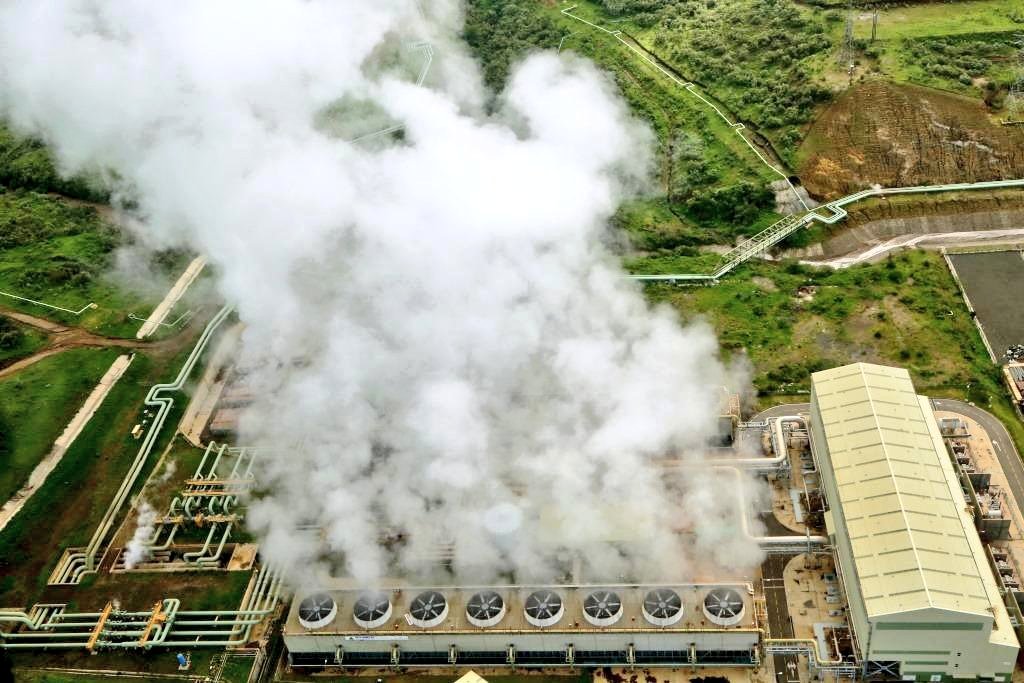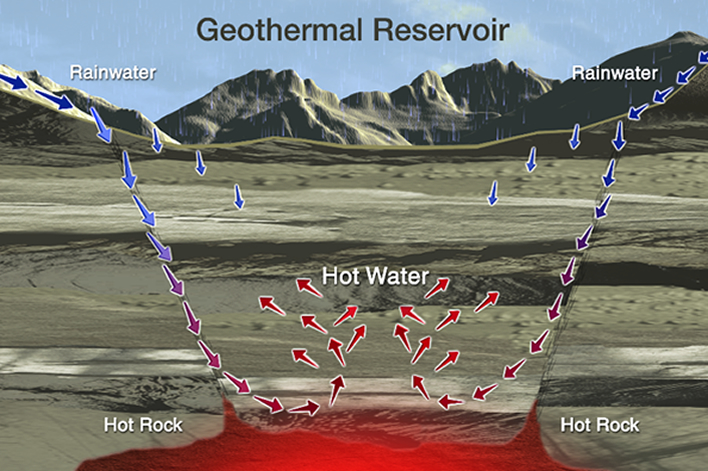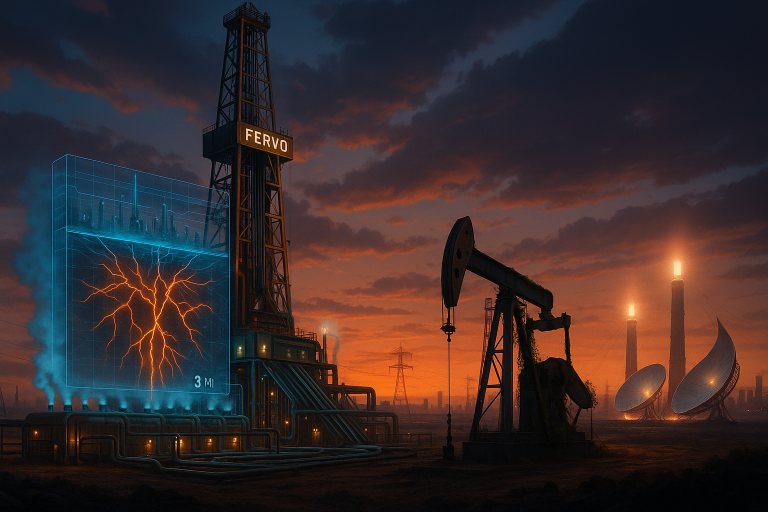Top 30 Geothermal Energy Projects Powering the Planet
The global geothermal landscape has transformed from a niche renewable resource into a critical baseload power solution , accelerating the energy transition. With 16,873 MW of installed capacity worldwide across 35 producing countries, geothermal now prevents 400 million tons of CO₂ annually while providing grid stability unmatched by intermittent renewables. This expansion is fueled by tectonic shifts: next-generation technologies now unlock geothermal potential in regions lacking volcanic activity, while traditional powerhouses like Indonesia and the Philippines aggressively scale existing fields.
I. The Titans: World’s Largest Operational Geothermal Projects
- The Geysers Complex, USA (1,500 MW)
California’s Mayacamas Mountains host this engineering marvel—18 power plants spanning 45 square miles. Operated by Calpine, it pioneered sustainable reservoir management by injecting 10 million gallons daily of treated wastewater to maintain steam pressure. Output equals San Francisco’s residential consumption. - Cerro Prieto, Mexico (820 MW)
Built atop a terrestrial spreading fault, this state-owned complex features five powerhouses developed between 1973–2010. Unique geology provides 15% of Mexico’s clean energy, though output recently declined due to reservoir depletion. - Larderello, Italy (769 MW)
The birthplace of geothermal power (1904) remains Europe’s largest producer. Enel Green Power operates 34 plants here, supplying 10% of global geothermal electricity while heating nearby communities. - Mak-Ban Complex, Philippines (458 MW)
AboitizPower’s flagship project spans Laguna and Batangas provinces. Its six plants use flash-binary hybrid technology to maximize energy capture from brine, setting the standard for tropical geothermal development. - Gunung Salak, Indonesia (377 MW)
Java’s volcanic highlands host Indonesia’s largest geothermal facility. Star Energy’s six-stage development since 1994 demonstrates continuous optimization, recently adding binary units to extract 8% more power. - Salton Sea Field, USA (345 MW)
Berkshire Hathaway’s CalEnergy subsidiary operates ten plants here while pioneering lithium co-production . The hypersaline brine could yield 90,000 tonnes/year of battery-grade lithium—potentially 15% of global supply. - Sarulla, Indonesia (330 MW)
North Sumatra’s landmark project, developed by a consortium (Medco, Ormat, Itochu), uses integrated combined-cycle technology . It powers 2 million homes and exemplifies modern geothermal financing. - Hellisheidi, Iceland (303 MW electricity + 400 MW thermal)
Nestled on the Hengill volcano, this plant pairs power with district heating and carbon capture. The co-located Climeworks facility mineralizes CO₂ into basalt , creating the world’s first negative-emissions geothermal plant. - Tiwi Complex, Philippines (289 MW)
The Philippines’ oldest geothermal field (1979) gained new life through AboitizPower’s brine-recycling binary units , boosting efficiency without new wells. A model of geothermal revitalization. - Darajat, Indonesia (271 MW)
One of Earth’s rare dry-steam fields , where 300°C vapor directly drives turbines. Operational since 1994, its geological rarity enables exceptional 40% conversion efficiency.
II. National Pioneers: Geothermal Flagships by Country

- Olkaria Complex, Kenya (985 MW)
Africa’s geothermal leader taps the East African Rift. Kenya aims for 1 GW by 2025, with Olkaria V’s expansion adding 165 MW. The project supplies 50% of Kenya’s renewable mix and showcases Iceland-Kenya technical transfer. - Taupō Volcanic Zone, New Zealand (1,207 MW)
The 174 MW Tauhara II plant —2024’s largest single geothermal addition—expanded this iconic field. Māori-owned entities participate in development, integrating indigenous stewardship. - Kızıldere Field, Türkiye (1,734 MW total)
Rapidly scaled through feed-in tariffs, Türkiye added 120 MW in 2024 alone. Recent plants co-produce lithium and boric acid from brine, boosting economics. - Nesjavellir, Iceland (120 MW)
Part of the Hengill system, this plant provides Reykjavík’s hot water via 27 km pipelines. Iceland’s 55% geothermal heating penetration is the world’s highest. - Mutnovsky, Russia (80 MW)
Kamchatka’s sole geothermal source powers remote settlements. Expansion plans target 150 MW despite Arctic logistics. - Wairakei, New Zealand (159 MW)
Commissioned in 1958, this pioneering plant still operates while implementing reinjection protocols to protect local geysers—an early sustainability lesson. - Aluto Langano, Ethiopia (7.3 MW)
A pilot project in the African Rift Valley. Ethiopia plans 1,000 MW geothermal capacity by 2035 to leverage its estimated 10 GW potential.
III. Next-Generation Frontiers: Breakthrough Technologies
- Fervo Energy’s Cape Station, USA (400 MW planned)
Utah’s first enhanced geothermal system (EGS) project adapts shale drilling tech. Phase 1 (2026) targets 70 MW via horizontal wells. Potential: 10 GW regional capacity. - Eavor-Loop™, Germany (65 MW thermal)
This closed-loop system circulates fluid through 4-km-deep boreholes without fracking. Slated for 2026 completion, it could heat 100,000 homes. - FORGE Lab, Utah (R&D Hub)
The DOE’s Frontier Observatory tests EGS innovations. Recent breakthroughs cut drilling costs by 26% via high-temperature fiber optic monitoring. - Superhot Rock Projects, Iceland & Japan
Pilot wells targeting >400°C rock could yield 10x conventional output . Iceland’s Krafla magma-drilling experiment produced 36 MW from one well. - Salton Sea Lithium Extraction, USA
Berkshire Hathaway/Controlled Thermal Resources demo plants extract lithium from geothermal brine at 90% lower emissions than hard-rock mining. Could supply 600K EVs/year by 2028. - Menengai Phase II, Kenya (35 MW)
Africa’s first large-scale EGS project. Three independent power producers will expand this Rift Valley field toward Kenya’s 5 GW geothermal target. - Kalinga Project, Philippines (120 MW planned)
Advanced-stage development in Luzon features Indigenous community co-ownership —a model for equitable geothermal. - Geretsried, Germany (50 MW planned)
Eavor’s commercial-scale closed-loop system in Bavaria avoids fracking controversies while providing flexible heat/power. - Habanero Project, Australia (1 MW pilot)
Geodynamics’ EGS demonstration in South Australia’s granite bedrock hit 250°C at 4.2 km depth. Proves EGS viability in non-volcanic regions.
IV. Emerging Players: Geothermal’s Next Wave
- Tuzla Project, Türkiye
Marmara region’s coastal field uses radial drilling to access shallow reservoirs. Output increased 22% with fiber optic monitoring. - Wayang Windu, Indonesia (227 MW)
Java’s high-efficiency plant runs at 97% capacity factor. Expansion plans include supercritical fluid extraction below volcanic zones. - Ngatamariki, New Zealand (100 MW)
Ormat’s binary plant operates without steam emissions. Reinjects 100% fluid—a zero-waste benchmark. - Las Pailas, Costa Rica (55 MW)
Central America’s most advanced plant powers 10% of the national grid. Features silicon recovery from geothermal fluid.
V. The Future: Scaling Earth’s Unlimited Battery
Geothermal stands at an inflection point. The International Energy Agency projects 800 GW of next-generation geothermal by 2050 —a 50-fold increase—potentially supplying 15% of global electricity growth. This expansion hinges on three drivers:
- Technology Leapfrogs
Enhanced systems could unlock 5,500 GW in the US alone —four times its current total power capacity. Drilling costs have already dropped 24–26% since 2020 through oil/gas tech transfers. - Mineral Synergies
Lithium, zinc, and silica extraction from brine could offset 30–40% of project costs. The Salton Sea alone may supply 15% of global lithium demand. - Policy Acceleration
The US Inflation Reduction Act’s 30% tax credit, Kenya’s feed-in tariffs, and Indonesia’s geothermal mining carve-outs de-risk development. The DOE’s Enhanced Geothermal Shot aims for 90% cost reduction by 2035.
Challenges persist: project permitting averages 7 years globally, and EGS faces public skepticism about induced seismicity. Yet geothermal’s promise as the only renewable providing 24/7 zero-carbon power makes it indispensable for grid stability. As Fervo Energy CEO Tim Latimer notes: “We’re not just harnessing heat—we’re unlocking the Earth’s battery.”
Data Sources : Global Geothermal Power Tracker, ThinkGeoEnergy 2024 Report, IEA Future of Geothermal



